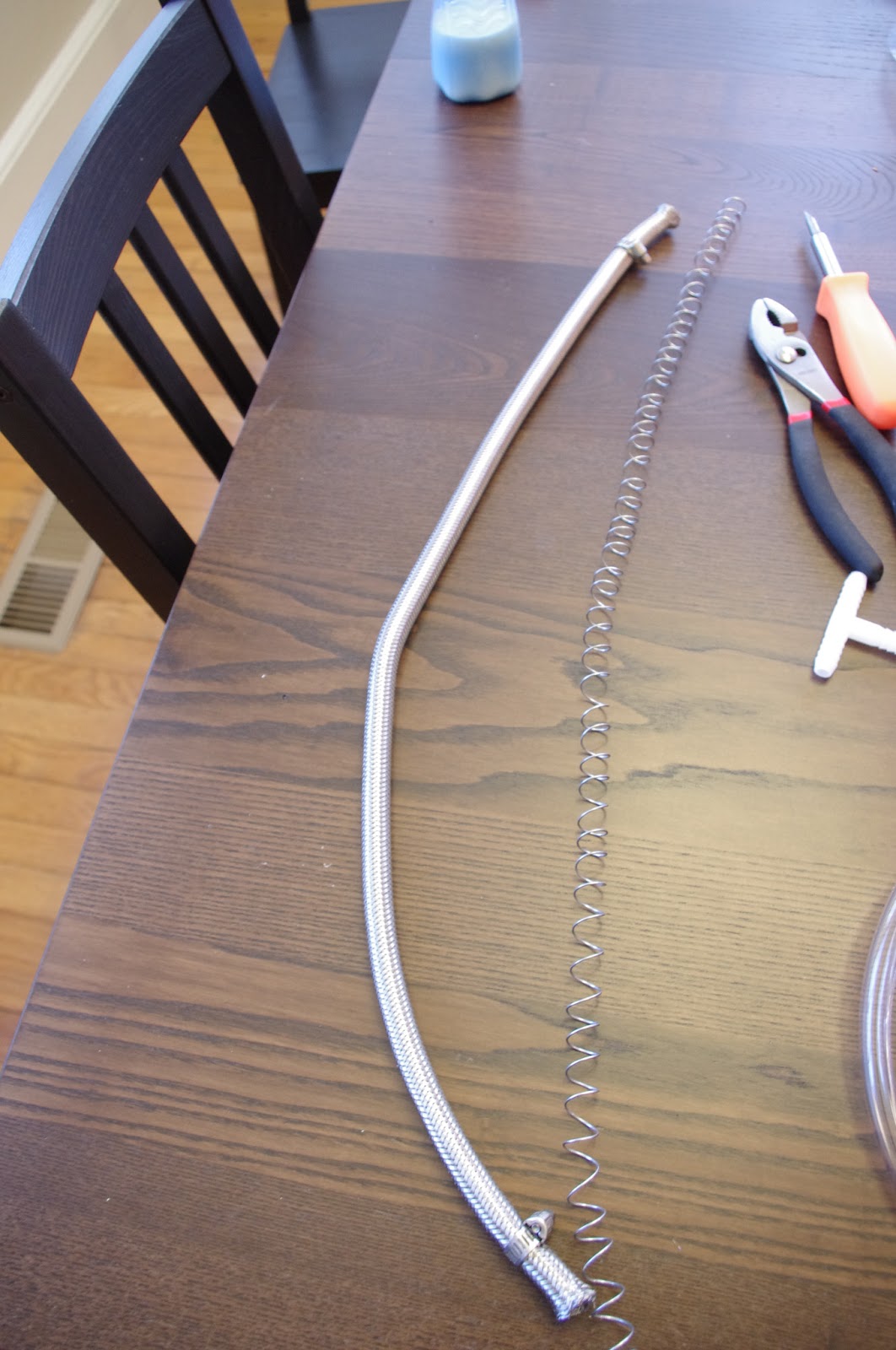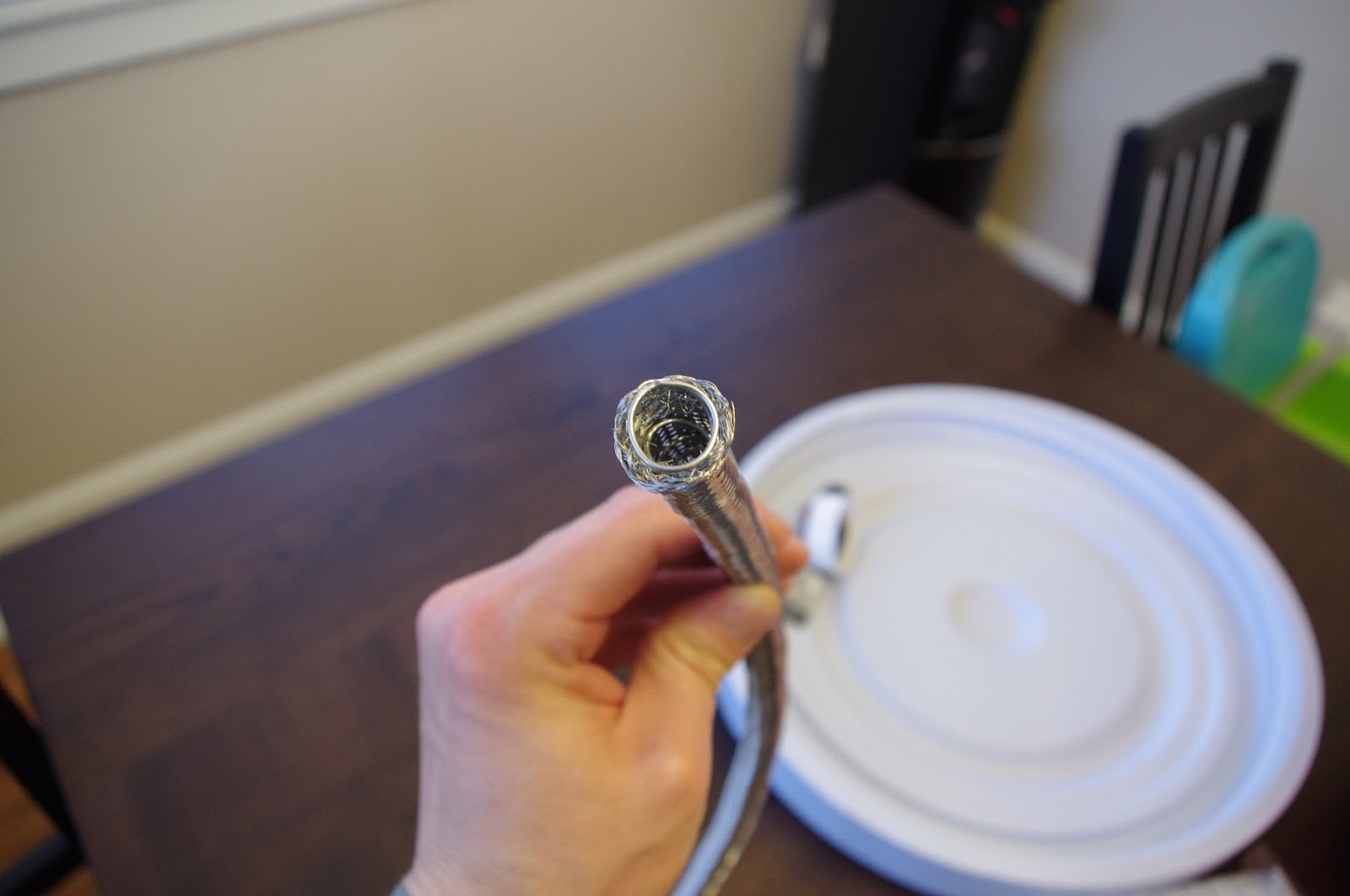Here is how I brew without breaking my bank.
1) Water. Water can get expensive if buying bottled water. For some, water straight from the tap is fine. You may choose to get your water tested for minerals, chemicals, and ions. If so, here is a tip: most pool supply stores will test your water on the spot for no charge. Maybe you have to tell them that it is for the purpose of a backyard pool or spa. As long as you are okay with that little fib it is a pretty risk free endeavor.
My household water has a very high ppm of chlorine, moderate Ca+, but low bicarbonate. The activated charcoal filter in my fridge does a good job removing Cl-, and the rest I adjust with a tiny bit of chalk. I fill up these bottles the night before brewing.
I use a 20 quart SS kettle for the strike and sparge waters, and my 42 quart kettle for my mash-out water.
Warming this water my stove top saves me the propane.
3) No fancy brew kettles. Yes, there are some nice kettles out there. They are also pricey. I can see why they are handy to have; with thermometers, drain valves, and other features. For the budget brewer there are other options. I went with this one. It is functional. However, it was very dirty upon arrival. It took many hours of scrubbing with steel wool to remove all of the nasty oils and grime. After that I boiled water in the bottom and used the steam to really bust up the residual aluminum dust/black crap.
I also own a stainless steel one, mentioned in point 2. I can see why stainless is generally better than aluminum, but it also costs about twice as much volume for volume.
The down side to a basic 42 quart kettle with no drain valve is that once the boil is done, and the wort is cooled, I have to pick up 6 gallons of still warm liquid and dump it into my fermentation bucket. So far I have not spilled any, but one slip could ruin the day.
4) Basic outdoor propane burner. Being an open air brewer has some challenges. Uncooperative weather is the biggest. While I have brewed in the snow with no noticeable impact, wind is my biggest enemy. I read many people say that this burner was wind resistant. It is also one of the least expensive basic burners. So far my experience has been generally positive. The flame sits down in a semi-enclosed area. Unless the wind gusts to around 20 mph or more the flame stays lit.
My only word of caution if using this burner is to crank it up high once or twice for a good 15 minutes and let the paint melt away. It is probably highly poisonous to breath that paint smoke, so crank it up for a bit far away from your breathing air. I commend this so the paint does not melt (and it will) while you have beer boiling.
5) Plastic buckets/carboys. These are cheap compared to metal/glass and serve the same purpose. I don't see much merit in comparing glass carboys to plastic buckets. There are pros and cons of each. This is all about getting into the brew world, and making good beers, on a budget.
This combo works well for me. The bucket is easy to pour my cooled post-boil beer in, blocks most of the harmful UV rays (when exposed), and is very easy to clean.
The plastic carboy is used for my secondary conditioning.
Beyond these items I really started saving more money as I went to all grain brewing, and my product has improved.
What I did not mention in this post was reusing yeast. I have not yet attempted to reuse yest, although I have collected and washed yeast for use. I will save that for a future post.
I also did not talk about what to do after the beer is done. I think kegging beer is probably cheaper in the long run. Saving bottles, buying caps, buying sugar and other supplies adds up over time.
And that is how I brew beer without going broke.





























